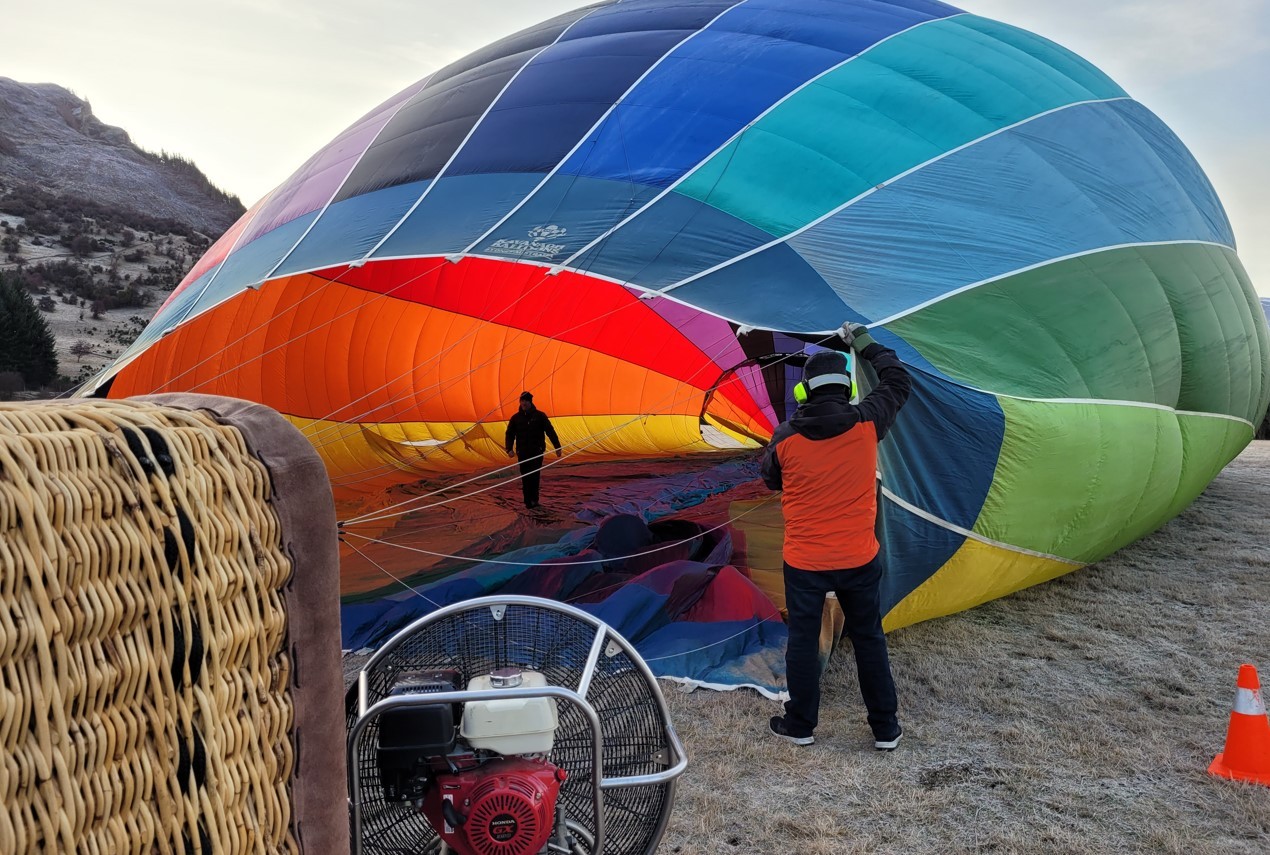Hard landings prompt changes

Hot air balloon pilots are now wearing safety harnesses during take-off and landings, after two were ejected from baskets in hard landings, six months apart.
The Transport Accident Investigation Commission last week released its reports into the landing by two separate companies, near Arrowtown in July 2021 and Methven, January 2022.
The pilot and two of the 10 passengers on Queenstown's Sunrise Balloons commercial scenic flight were ejected from the basket in the Arrowtown incident.
The report found as the balloon approached a paddock to land, it was travelling fast on a quickening wind. In the final few seconds of flight, however, the wind speed decreased and the balloon basket descended and caught the top lip of a gully.
"It hit hard and bounced and slid a further 150 metres across a paddock," the report reads. "The pilot and two passengers were ejected and sustained serious injuries."
The TAIC investigators found the three people were vulnerable to being thrown from the basket.
"The pilot was standing, manipulating control ropes when the basket struck the gully lip, and was not wearing a restraint harness.
"The passengers were unprepared for the landing -- not in the correct crouched landing position, not holding on to the rope handles as required."
In Methven, a pilot was ejected from an Ultramagic Balloons balloon when it bounced in a paddock. The pilot fell under the basket, was dragged across the field with a balloon control rope line caught around the neck, and suffered serious injuries.
It tipped over on second contact and came to a rest 35m away. All the passengers remained in the basket and uninjured, as they were in the brace position and well briefed.
The TAIC recommends pilots wear restraint harnesses for critical phases of flight, such as landings, and include an appropriate margin of safety when selecting landing points.
"If the pilot is ejected, an accident is virtually certain because the balloon is uncontrolled and passengers unattended."
Passenger safety briefings should be clear, concise and make it easy for all passengers to prepare for unusual or emergency situations.
Current Civil Aviation Rules specifically exempt balloon pilots from having to wear harnesses during take-off and landing.
CAA Deputy Chief Executive, Aviation Safety, David Harrison, says the CAA is considering a change after the reports but it has already contacted all four commercial balloon operators in New Zealand and found they have voluntarily adopted the practice.
The companies, including Queenstown's Sunrise Balloons, have incorporated it into their Safety Management Systems.
The CAA is following up on other recommendations such as safety briefings, but these are also now thorough across the industry.
"The best way to ensure safety in aviation is through voluntary best practice behaviour," Harrison says. "In this case, due to the small number of operators and their willingness to improve safety procedures beyond the requirements of the rules, we are satisfied that this risk is mitigated.
"In the event that new information arises, or we become aware of any non-compliance with operator requirements for pilots to wear restraint harnesses, further action will be considered accordingly."
Sunrise Balloons was approached for comment to this story but did not respond. The hard landing was the company's only major incident in decades of operation.









